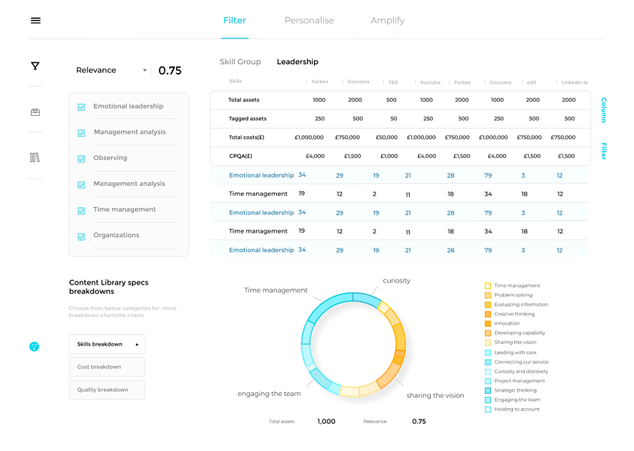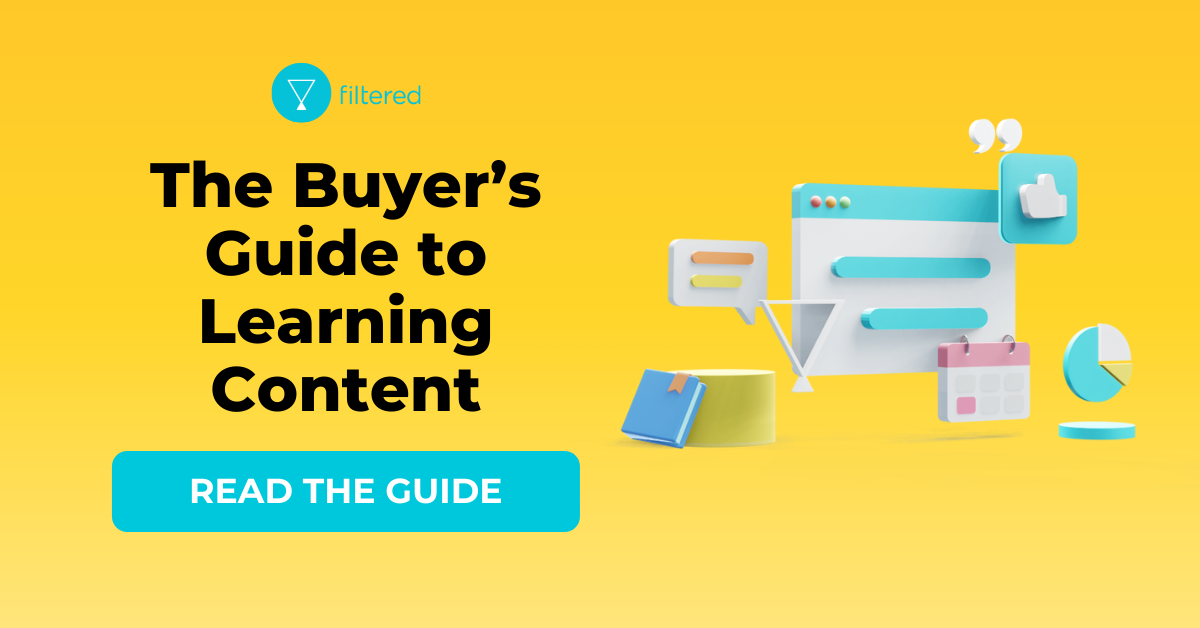Do you have the data you need to create a compelling learning content strategy?
Just one third of learning leaders say their capability programs have an impact. At the same time, nearly half of company leaders say they don’t have a prioritised learning plan. The two are probably connected.
Without direction, learning initiatives don’t work. Content is the means by which we enact learning plans, but in most companies it’s chaos. You need an informed content strategy. The data is more readily available than you may know.
Diagnose
Content libraries collect detritus. Duplicates, obsolete material, broken links, poor quality content, and irrelevant stuff accumulates irrepressibly over the months and years. And they’re not all in the same place. They’re scattered across LXPs, LMSs, SharePoint sites, emails…
This is difficult for L&D to keep on top of, there’s just too much. And learners are lost - most give up before they even find relevant content (search success rates are low) and even then there’s no guarantee of quality.
At the same time as too much, there is also too little in certain priority areas. As business priorities have moved on, out of date assets haven’t been replaced with content that’s relevant now. This forces learners to resort to the Google/YouTube content lottery.
So how do you work out what’s good and what’s bad? The answer lies in...
Skills and Data
The first step is deciding what skills and capabilities are especially relevant for your workforce today, and over the next few years. To put it another way, you need a skills framework fit for your company’s current and future priorities. That skills framework is essential for many reasons and one of those is that it becomes the means by which you measure all content - libraries you’ve bought, libraries you’re considering, content you’ve produced yourselves, the web. That data should underpin a skills and content strategy is indisputable but often overlooked, despite the arguments put forward by learning strategists like Lori Niles-Hofmann.
We can run our algorithms through any piece of content to determine how well it aligns to any skill in a skills framework. In other words, we can robustly and scalably tag any content. That gives you exactly the curated content you need for your purposes. It also means that in aggregate you can evaluate an entire library against your skills framework. Is the coverage quite what you need? How does it compare to other libraries?
We call this content intelligence. It’s the groundwork you need to make any LXP work.
Make internal business cases with data
Data is evidence. The approach outlined above gives you the data you need to design a strategy and back it with a solid business case. Data on the duplication, gaps, redundancies, etc, all tied into business strategy, are the ammunition you need to ensure that the business sits up and listens. This may be the greatest value we add to L&D teams: credible data.
Use it to drop a library, buy a library, make better use of the web, create more content, create less content, find more industry-relevant content, whatever your strategy needs to be.
How to do this
With content intelligence, we can help you form the backbone to a content strategy in a matter of days. And you don’t need to go through the procurement process of buying a new platform to get it (although the data from content intelligence can help your business goals there too, if you want the full set of Filtered LXP benefits).
Within 48 hours we create a report of your learning assets ranked with relevance scores relative to your high-value skills. From this you can decide which will go in front of your learners. The tags we apply also enhance discoverability through better search and recommendations.

The report will also give you an aggregated library comparison. This shows you how your libraries provide for each and all of your skills. You can even see how libraries compare to each other with a Cost Per Qualifying Asset (CPQA) metric. This has saved clients up to one third of their content spend.
Still finalising your learning strategy for 2021? Don’t get pressured into making the wrong decision. For a fraction of the cost of a library, we’ll give you all the data you need to make the right one. And we can do it in under a week, so you’re ready and raring to go before Q1 kicks off.
Just enter your email below and we’ll get the content intelligence algorithm whirring right away:


